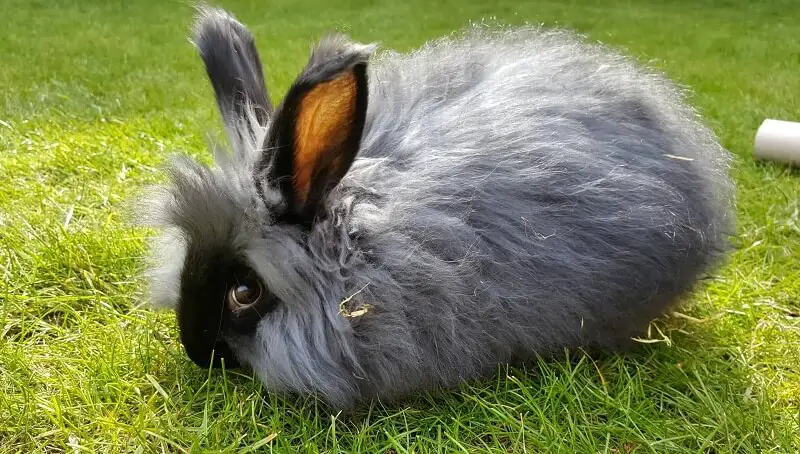
Interesting Facts About the Angora Rabbit
November 9, 2022
Why Do Chameleons Change Their Colors?
November 10, 2022
Beagle is one of the most popular and well-known breeds of dogs. The Beagles are energetic, carefree, and optimistic dogs, but they can have a stubborn character. The Beagle is the perfect breed for active households. The funny and uniform behavior of this breed makes it an excellent choice for families with children, but keep in mind that not all dogs get along with children, regardless of breed.
The breed was originally bred in 16th century England as rabbit hunting dogs. The Beagles are known for their tendency to vocalize, especially with their barking which is much like a howl. Some beagles vocalize out of boredom, but many do it just because they want to, no matter how much activity they get.
Beagle – breed-specific characteristics
The beagle is a compact, medium-sized dog. It can be between 33 and 40 centimeters tall and can weigh between 10 and 18 kilograms. Its legs are extremely strong and offer speed and strength.
The long head and round, hanging ears make the Beagle an extremely popular dog. The loyal look is also specific to a Beagle dog. Colors may vary, as all colors except red-brown are recognized. The most common color variations are the bi-colors like brown and white, red and white, yellow and white, or even tri-colors like black, white, and brown. According to the description of the breed, the tip of the tail should always be white.
The short, shiny coat is very easy to maintain. For example, after a walk through the woods, where the beagle spends much of the time rolling through the leaves and the ground, it will be easy to clean him.
The playful, always-raised tail is perfect for finding your Beagle puppy when he spends time outside, because it is reflecting light. In fact, the hunting sense of the dog is the heritage of this breed.
History of the Beagle
Beagle can be traced back to 16th century England, where wealthy English often owned packs of dogs. The small dogs were usually Beagles, which were used to hunt rabbits and other small prey. They were also used for chasing prey for hunters.
Over time, the breed was still developed in England and later in North America. The Beagles became more refined and widely recognized in North America by the late 19th century, eventually becoming one of the most popular breeds. Although nowadays they are still used in packs for hunting, beagles are commonly seen as wonderful companions and family dogs. The Beagle breed was recognized by the American Kennel Club back in 1885.
The Beagles are track dogs. Their acute sense of smell equals that of Bloodhound and Basset dogs. They are used by the U.S. Department of Agriculture to detect food smuggled into luggage.
The Snoopy cartoon, Peanuts, is about a beagle, reflecting the popularity of the breed when Charles Schulz began composing the comics in 1950.
Taking care of a Beagle
The beagles have short, water-resistant fur with a moderate to high sheding rate. Routine basic care is all that is commonly needed for beagles to look in their best shape. Fortunately, their fur doesn’t collect much debris, so you won’t need to bath them frequently.
Be sure to keep their ears clean to prevent ear infections. Also, do not forget to cut your dog’s nails regularly to prevent excessive growth, which can affect his walk. It is also good to brush your dog’s teeth at least a few times a week to maintain good oral health.
You might also like my articles on other breeds of dogs like the Canaan dog, the Samoyed, or the Labrador.
Although they can sometimes act lazily on the surface, beagles have a lot of energy and need regular exercise to consume it. Otherwise, the dog can release that evil nature from within.
Walk your dog once or twice a day and give him plenty of chances to run and play. As a follow-up, they like to sniff everything along the walks, which will train both the mind and body of the dog.
However, you will need good control and training of the leash, so you can control your pet if he comes up with a smell he wants to follow. Because beagles get along well with other dogs, running free in a properly enclosed dog park can be fun for everyone.
A yard with a physical fence is preferred to one with an electric fence, as a beagle may not stop once it catches the scent of an interesting prey. Make sure your pet has an identification collar or microchip, as beagles can easily escape, digging under fences and finding other ways to get away.
These fearless dogs are suitable for both hunting and companionship, but proper training for obedience is an absolute necessity. Without it, the beagles can become undisciplined and defiant because of their powerful nature. They are difficult to train and control, and you need toprovide your dog with a lot of fun and make him interested in paying attention to your desires.
Beagles can be great companions and great family dogs when properly trained and socialized. Being raised to be in a pack, they get along well with other dogs, and most do well with cats, especially if they are raised together since pups. They are excellent with children, as long as the child is old enough to treat the dog with respect and tolerate the high energy that a beagle can manifest.
Consider their growling and barking. They will react vocally when they detect an interesting smell, but they can also bark due to boredom or separation anxiety. Beagles need the companionship of humans or, at least, the company of other pets.
Stubborn and self-confident
Beagle dogs know what they want, and their hunting dog heritage gives them speed and a very well-developed sense of smell. For this reason, the Beagle breed has a pronounced hunting instinct, so many Beagle dogs disappear in the bushes, ignoring the call of the owner when they feel the presence of a rabbit.
Even though these intelligent dogs seem innocent, they need firmness when they are puppies. Dogs of the Beagle breed have a very strong will. In order to facilitate training, use this to your advantage. For example, a Beagle dog would do anything to eat something tasty, including listening to the owner’s commands.
On the other hand, its weakness in food can be dangerous. The answer to the question of what a Beagle eats is anything that comes under its nose. So, it’s essential to train them to refuse food from unreliable sources.
The excellent sense of smell makes the Beagle perfect for border patrol work. In the US, so-called “Beagle brigades” have been used by the Customs and border Protection Office since 1980 to detect smuggled food, plants, and animal parts.
At the same time, these dogs are very affectionate and gentle. They are very social and always want to be in the center of the family. They are used as therapy dogs, and, unfortunately, also for laboratory experiments. In fact, Beagles are the most widely used breed in scientific research.
A Beagle is an active member of the family
 Due to its friendly and affectionate nature, the Beagle is an ideal family dog that feels comfortable both in the countryside and in a city apartment. But before you adopt or buy a Beagle, be aware of the breed’s increased energy level.
Due to its friendly and affectionate nature, the Beagle is an ideal family dog that feels comfortable both in the countryside and in a city apartment. But before you adopt or buy a Beagle, be aware of the breed’s increased energy level.
You can raise a Beagle in your apartment, but only if you give it enough ways to consume its energy. If he has a garden, pay attention to the height of the fence – the Beagles are real masters of escape.
The Beagle does not feel comfortable when left alone. He is very sociable and therefore likes to have company. His desire to make friends with everyone does not make him suitable as a guard dog. Even if he were to bark strongly at the sight of an intruder, his barking would rather be a friendly greeting.
A good family animal, the Beagle can live with other dogs, regardless of breed, age, or size. They also get along well with cats.
Common health problems
Responsible breeders strive to maintain the highest breed standards as set by kennel clubs like AKC. Dogs raised by these standards are less likely to inherit health conditions. Even so, some hereditary health problems can appear in the breed. In general, Beagles are usually healthy dogs. However, they can still develop health conditions. The following are some conditions that might affect your Beagle:
- Epilepsy: A neurological disease that causes seizures;
- Hypothyroidism: A condition caused by insufficient thyroid hormones;
- Intervertebral disc disease: A condition that occurs when the discs between the vertebrae swell and press the nerves;
- Progressive retinal atrophy (PRA): a genetic disease that is characterized by bilateral degeneration of the retina.
Diet and nutrition
Beagles love to eat and are famous for detecting, attacking, and eating anything they can. You should provide two meals a day of up to 3/4 cups of dry dog food per meal. The amount will vary depending on the size of the dog, age, activity level, and other factors.
Keep dog food and human food well secured against this thief. Because of their omnivorous appetite, you will need to monitor the weight of the dog and take action when you see that it becomes overweight. Discuss your dog’s needs with your veterinarian to get recommendations for the right feeding schedule and quantity.
Pros:
- Great pets;
- They get along with other animals;
- They don’t need much care.
Cons:
- They love to dig and are hard to train;
- Loud barking and howling;
- They shed regularly.
If you think a Beagle dog is right for you, be sure to do a lot of research before adopting one, and who knows best about them than Beagle owners, and reputable breeders?
